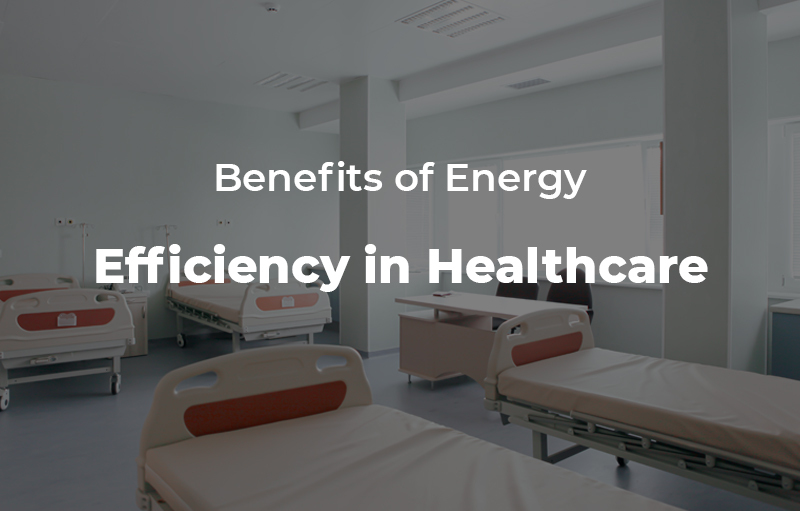Healthcare – an ideally fundamental right does not quite manifest itself in the real world as so owing to many complicated reasons that devoid it of its noble goal of being truly inclusive.
Did you ever think energy efficiency could pose a long-term solution toward making healthcare more inclusive, socialistic, and accessible? Well, yes! The money spent on compensating for the energy inefficiency makes healthcare a lot more expensive.
Each hospital bed accounts for thousands of dollars in electricity, and at extremely high operating costs. Hospitals find themselves in a predicament wherein because of the pressing climate narratives, they need to conserve energy but don’t know how to. Read below to navigate the intersection of health and energy better.
The Pressing Problems
1. Continuous Operation – 24/7/365
The power supply is constantly required because the patients need around-the-clock care. So, no “limiting” or mitigating strategies will help. This characteristically also delays technology upgrades.
2. The Need For Ensuring Health & Safety
Hospitals are a sensitive environment – dangerous chemicals and ingredients surround patients, staff, visitors, and doctors. Bearing these extra precautions also exceeds the energy requirements by making it more time-consuming and costly. Energy consultants need to be extra mindful about issues like contamination, air quality, and lighting when dealing with hospitals.
3. The Need to Expand on Facilities
Hospitals are extremely expedient about their infrastructure – they prefer adding new wings as and when necessary because the previous operations cannot get disrupted. So, the newly carved out areas tend to be more updated and energy-efficient vis-a-vis HVAC, lighting, insulation, etc., adversely affecting the peak energy efficiency of the whole hospital. This also increases the renovation costs.
4. The Rising Energy Costs
Energy efficiency has well, never been affordable. But there are multiple ways to avail and optimize rebates, subsidies, etc., which is why we recommend exploring this with experts. Hospitals are large enterprises, with sophisticated and complicated structures, high rates of product procurement as well as transportation costs. All of which makes hospitals relatively more vulnerable to market fluctuations/spikes.
The Possible Solutions
1. Make the upgrades that don’t require big, upfront investments.
You will realize the endless potential savings that don’t need low and/or no cost-saving. These could be:
Replacing the Exit signs with the LED signs as the former use 36 Watts and the latter only five. For instance, 1000 beds mandate at least 500 Exit signs, so retrofitting LED signs will result in about $20K savings each year AND the initial investment will pay itself within a year.
Replacing light fixtures with LED also brings in similar financial gains along with efficiency. Most LED projects are executed with the sole aim of saving on electricity. However, LED lights also bring in several safety benefits, which is why most audits will suggest switching up the lighting.
1. They have a lower power consumption because of which they emit less heat. This implies that there are lesser chances of it starting a fire.
2. As opposed to other conventional lamps that require glass in their respective designs, LED lighting has no such prerequisites and can be modeled utilizing much safer products. This also makes them shatterproof.
3. Owing to their low consumption, LED lighting also runs successfully on a power back, for a very long time. This is nothing short of a life-saving hack for during those blackouts!
Limiting Air Changes in the OR: A functional OR undergoes 20 air changes per hour on average. This reflects heavily on the electric bill. A simple way out is perhaps installing smart-tech to fix the changes every 6 or 8 hours.
Let Data Analytics Guide You: Green-tech or Smart-tech is extremely reliable. Energy-IQ is a data-driven optimization solution that enables the identification of the most cost-effective energy upgrades. The organization happens by value, so savings are immediately rectified and registered. Another recommendation is SiteLogIQ which is great for rendering green engineering support.
2. Reduce Environmental Impact
On average, hospitals use 600,000 BTUs of energy per building in a year which translates to 9.8% of US Greenhouse Gas generation. This makes hospitals the biggest contributors. Ironic, but hospitals end up causing severe health damage because of their emissions. Energy conservation can do a great deal with regard to reducing dependence on pollution-generating energy sources. The healthcare industry HAS prioritized incorporating sustainability as is demonstrated in its commitment – “87% of respondents in the healthcare has plans to electrify space or water heating” which will reduce the utilization of fossil fuels. Moreover, between 2020-2025, the industry also has a high concentration of renewable energy goals.
3. Begin At Base – Redo the Infra
Energy efficiency cannot be entirely achieved without making infrastructural changes. Hospitals can begin by altering the insulation; this goes out, especially for the older buildings. This increases heat retention suitable for winter times and keeps the building cooler in the summertime. This simple step will make the heating and cooling cost immensely while forging a more comfortable environment for the patient to heal faster. It’s also important to note that taking on newer green building projects takes about the same time to build while enabling much greater savings in the long term.
4. Program Your HVAC
Heating, Ventilating, and Air-conditioning (HVAC) are alone responsible for more than 40% of energy consumption. The labeled products help save up to 16% energy which translates to a weekly saving yearly saving of at least $100. The updated HVAC systems actually come with in-built “climate controls”.
Air-conditioning does not contribute much to the bills, taking up around 6% of energy. ENERGY STAR central air-conditioning units provide 8% more efficiency. The air-conditioning systems are usually integrated with the heating systems implying that it’s ideal to purchase both at the same time to maximize efficiency.
Moreover, allowing the patients and the nursing staff the option to monitor or control the HVAC utility also increases their comfort.
5. Integrate Systems Effectively
Owing to the multidimensionality of hospitals, disparate energy systems come into existence. Non-integrated systems are more complicated, difficult to manage, and definitely not energy efficient. Upgrading lighting and HVAC(s) is one thing but managing the whole building and its systems as a facility manager can be daunting if the hospital has different systems altogether.
Integrated systems simply & unify all management systems. This also gives you ABSOLUTE CONTROL over being able to customize your comfort with one interface.
Of all building types, incorporating energy efficiency in hospital buildings is the most complex. We understand that the vantage point of hospital development remains good care for the patients. But it’s the best time to explore the changes because the technological and intellectual counsel is readily available.




